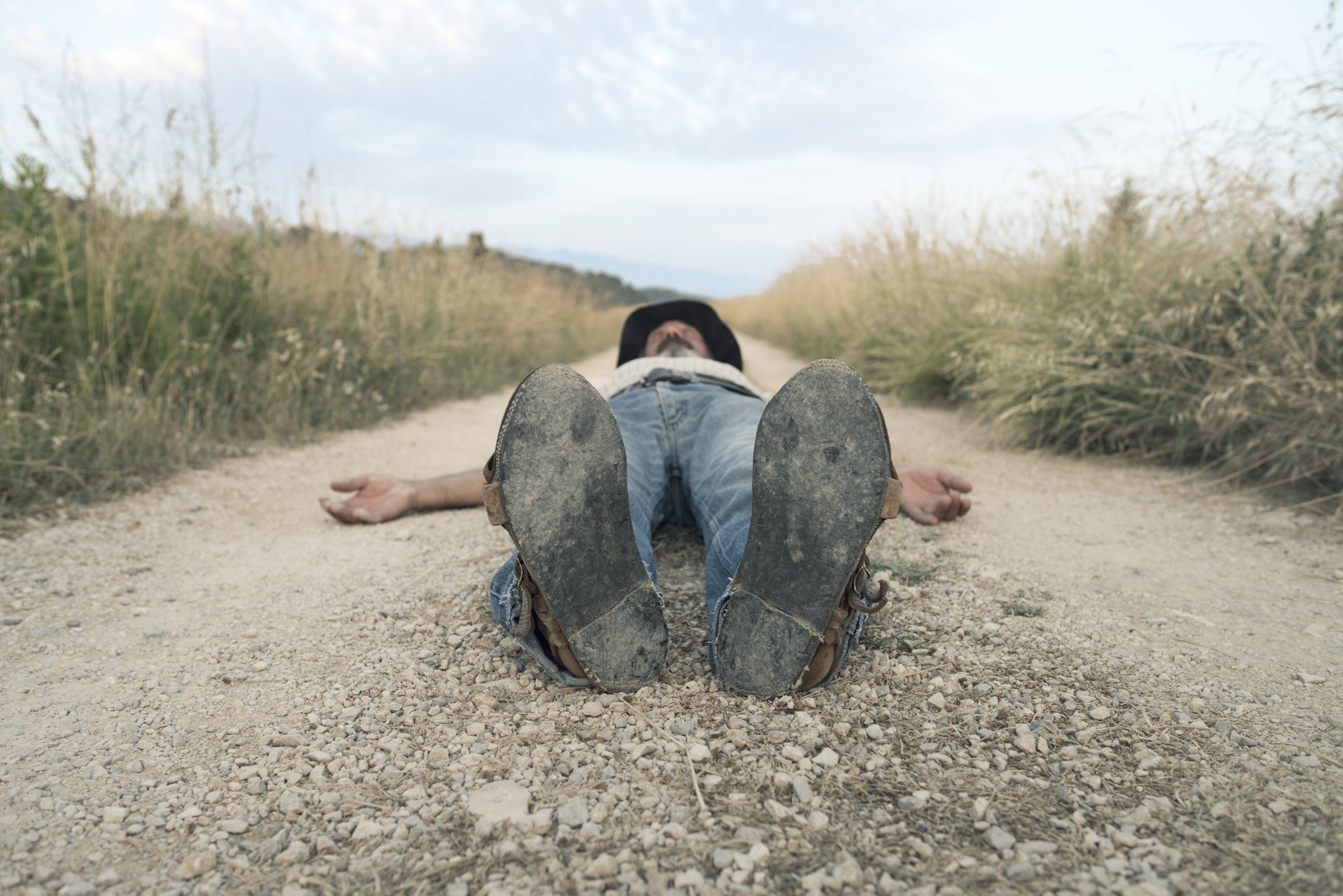
He stands there with his eyes gazing downwards, in his own thoughts. You walk towards him, then he looks up. When you get even closer, he falls – straight backwards – and stays lying on the ground. The framework cracks. The curtain falls. And stock prices tumble haphazardly.
It used to be different. You learned something and worked with that in the same workplace for 50 years. Then you got a gold watch, punched out and retired.
But what happens now? Dad is suddenly superfluous. The safe, rigid masculinity, the wife’s and kids’ security blanket, becomes a luxury item. He falls. But he falls straight, with dignity. It hurts, but it’s beautiful. And everything you did was to get close to him. Masculinity doesn’t manage too large an interference upon integrity. The reality came too close.
A fallen angel. A fallen woman. But a fallen man? And literally? Think, if all those who could would do that! Yes, think.
The four fundamental rules of masculinity, according to the psychologist Robert Brannon (1976):
In her book Stiffed (2000), Susan Faludi wrote about American men in freefall. The old man’s role is undermined by low salaries, workplaces closing down, wives who leave them and on top of everything else the city’s football team (the glue that binds them together) is bought out and disappears from the city. Loyalty is gone. Only the winner counts. And because there’s only one winner in every competition, there are a lot of losers.
But – first and foremost – the men have been abandoned by their fathers. Those who went out into a necessary war or were forced to work long days in order to fulfil their duties to provide for the family. The fathers who had clear roles and values to live by.
ID:I gallery, Stockholm, May 2007
Robert is working to put together Men That Fall, Women That Turn and Kids on the Slide before the opening of the exhibition a few days later. He has just finished setting up Men That Fall and screens showing men lined up now stand in the window facing the street. Through the open door Robert sees how a woman comes by and stays there. She stands about 3 metres away and contemplates Krippe, the young man outside the sausage stand. The woman stands still and thus also the young man on the screen. 10 minutes pass. Robert can’t contain himself. He walks out to the street and greets the woman.
She asks, ”It’s a loop, right?”
Robert answers, ”Yes.”
And after a moment, ”You can of course try to walk a little closer to the screen.”
The woman takes a few rambling steps – Krippe looks up – and falls. She starts laughing hysterically. The woman plays with another couple of men before she walks away, still laughing loudly.
The Post Office’s old office building, Hökarängen, December 2006
The pedestrian street in Hökarängen’s centre doesn’t look the way it usually does. It shines of light from the large windows in the closed post office. Men That Fall and Women That Turn are making a guest appearance in the suburbs, invited by Konsthall C. Now they glow like sparkles in the cold and dark. The passersby, whose curiosity is awakened by the unexpected sight, stop to see what’s happening. They laugh at the men that fall, are curious about the women that turn and stare at them.
”How lovely with a little culture here,” says a man.
A boy comes walking by with his father. They also stop for a look. The boy walks up to one of the men, who falls. He turns amazed to his father.
”Look, dad! He falls!”
The boy backs up a few metres from the window and hops forward again.
”I can make him fall! Dad! Look!”
Paradigm shift. The fall ends in rest. Try not to sleep now. You have waited long for this moment, don’t let it disappear.
About the artwork Men That Fall
Excerpt from: Andersson, G H., Brečević, R., Thunell, H. (2009) Performing Pictures Maribor: Association for Culture and Education Kibla. (Second Edition Tox. Year 13; No. 28)
